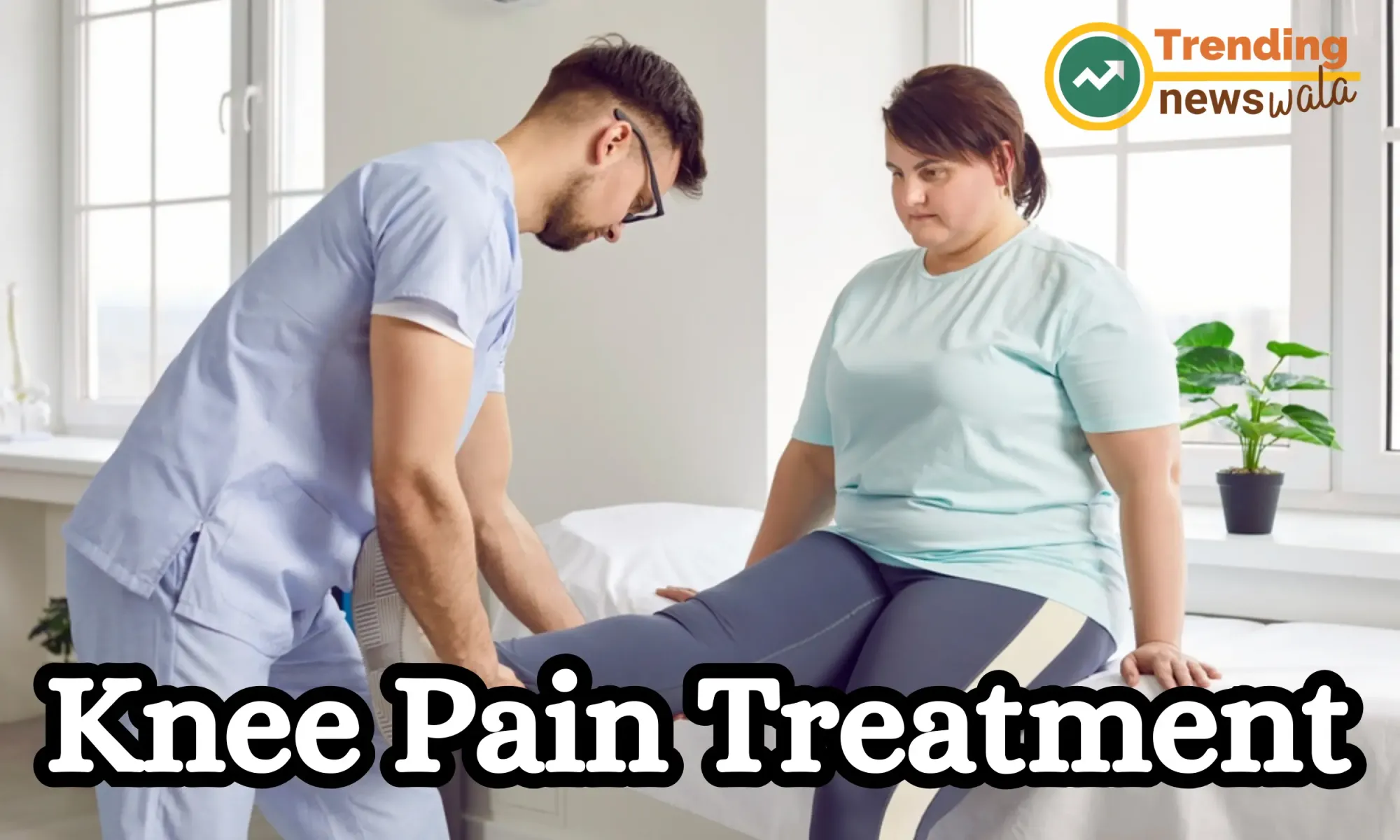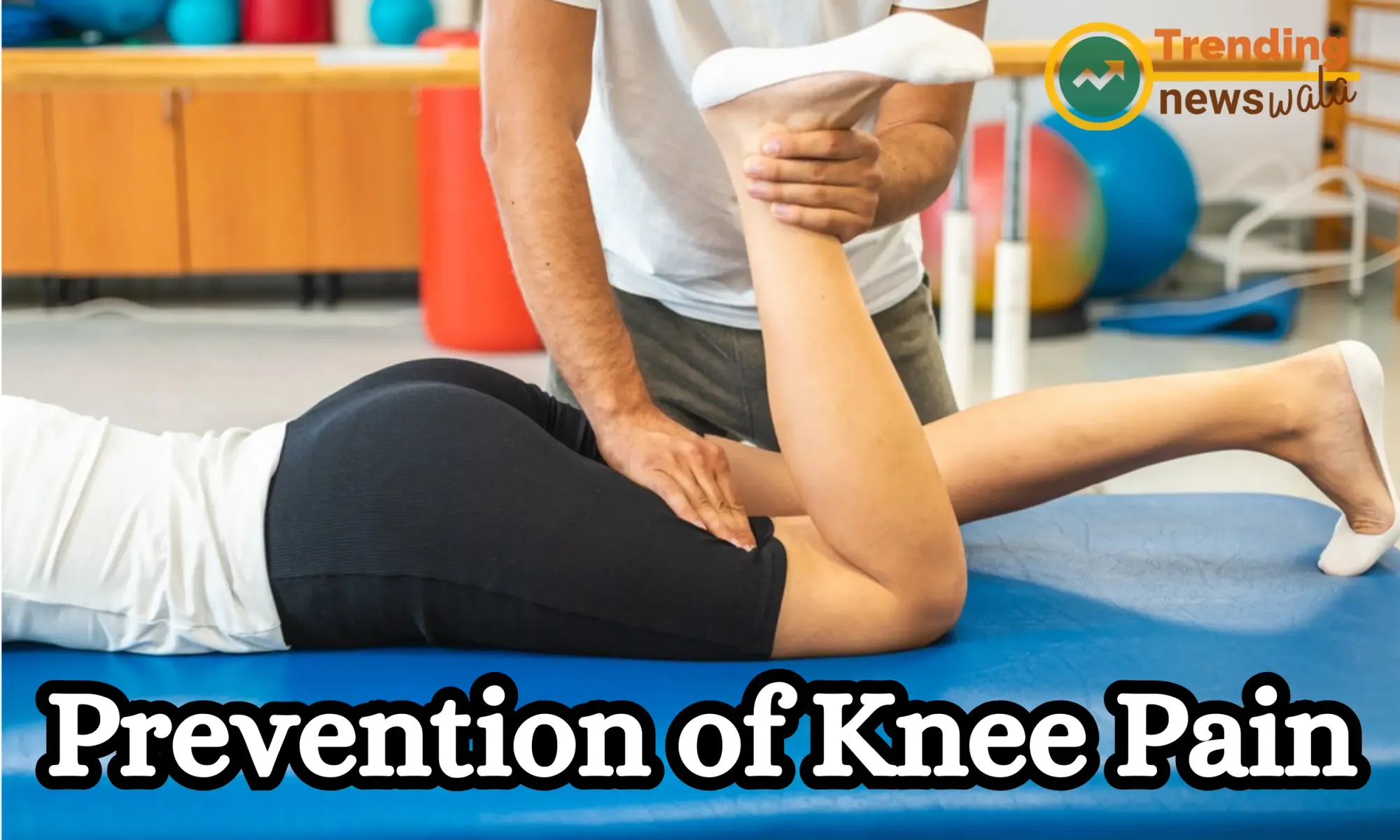Knee Pain Causes, Treatment, & Prevention

Knee pain is one of the most frequent in the human body. It affects both the elderly, usually having a degenerative origin, and young individuals usually due to traumatic injuries or problems with the alignment of the kneecap (so-called patella syndromes), explains the orthopaedic surgeon in india.
Generally, knee pain (whether mild or severe) has a pathological meaning, that is, there is a pathology or disease that is at the origin of it.
Constant knee pain is an indication (or symptom) that something is not right. In other situations, knee pain can be caused only by a specific situation of overload of effort, such as what occurs on a longer walk, or climbing inclines, or carrying excessive weights or even in more intense sports training.
- Osteoarthritis: Osteoarthritis is a degenerative joint disease that occurs when the protective cartilage in the knee joint wears down over time. This can lead to pain, stiffness, and reduced joint function.
- Rheumatoid Arthritis: Rheumatoid arthritis is an autoimmune disease that can affect the knee joint and cause inflammation, pain, and joint damage.
- Ligament Injuries: Injuries to the knee ligaments, such as anterior cruciate ligament (ACL) tears, medial collateral ligament (MCL) tears, or posterior cruciate ligament (PCL) tears, can cause significant pain, instability, and swelling.
- Meniscus Tears: The meniscus is a wedge-shaped cartilage that acts as a cushion in the knee. Tears in the meniscus can cause pain, swelling, and limited knee movement.
- Tendonitis: Tendonitis refers to inflammation of the tendons around the knee, such as patellar tendonitis (jumper's knee). It can cause pain during activities and tenderness.
- Bursitis: Bursitis is the inflammation of the bursae, small fluid-filled sacs that reduce friction between the bones and soft tissues around the knee. It can result in pain, swelling, and tenderness.
- Overuse or Strain: Repetitive activities, excessive use, or strain on the knee joint can cause pain. This often occurs in athletes or individuals with physically demanding jobs.
- Patellofemoral Pain Syndrome: This condition involves pain in the front of the knee, around the patella (kneecap), and is often associated with activities that involve knee flexion and extension.
- Iliotibial (IT) Band Syndrome: IT band syndrome is common among runners and can lead to pain on the outer side of the knee.
- Fractures: A fracture of the knee bones, such as the femur, tibia, or patella, can cause severe pain, swelling, and loss of joint function.

Knee pain treatment depends on the underlying cause and can range from self-care and physical therapy to more advanced medical interventions. Here are some common approaches for treating knee pain:
- Rest: If you've recently experienced knee pain due to an injury or overuse, it's crucial to rest the affected knee. Avoid activities that worsen the pain and give your knee time to heal.
- Ice: Applying ice to the painful area can help reduce inflammation and numb the pain. Use an ice pack wrapped in a thin cloth for about 15-20 minutes every 1-2 hours.
- Compression: Using a compression bandage or knee brace can help reduce swelling and provide support to the injured knee. Ensure the compression is snug but not too tight to avoid restricting blood flow.
- Elevation: Elevating the injured knee above heart level when resting can help reduce swelling and promote better blood circulation.
- Medications : Nonsteroidal anti-inflammatory drugs (NSAIDs) like ibuprofen or naproxen can help relieve pain and reduce inflammation.
Acetaminophen can be used for pain relief but does not have anti-inflammatory properties. - Physical Therapy: A physical therapist can create a customized exercise program to improve knee strength, flexibility, and stability. This can be especially helpful for knee pain related to muscle imbalances or weakness.
- Injections: Corticosteroid injections may be recommended by a healthcare provider to reduce inflammation and provide pain relief.
Hyaluronic acid injections may be used for knee osteoarthritis to lubricate the joint and reduce pain. - Orthotics: Customized shoe inserts or knee braces can provide support and stability, particularly if the pain is related to structural issues or alignment problems.
- Lifestyle Modifications: If knee pain is related to factors like obesity or overuse, making lifestyle changes, such as weight loss, adjusting physical activities, and using proper techniques, can be beneficial.
- Surgery: Surgical options may be considered for severe cases or conditions such as ligament tears, meniscus injuries, or advanced osteoarthritis. Surgical procedures can include arthroscopy, ligament reconstruction, or joint replacement.
- Alternative Therapies: Some people find relief from knee pain through alternative treatments like acupuncture, chiropractic care, or herbal remedies. Consult with a healthcare provider before trying these options.
- Home Exercises: Regularly performing knee-strengthening exercises and stretches can help prevent and manage knee pain. Consult with a physical therapist for a suitable home exercise program.
It's essential to consult with a healthcare provider for a proper diagnosis and to determine the most appropriate treatment plan for your specific condition. The treatment approach will vary depending on the cause of your knee pain, and a healthcare provider can provide guidance on the best course of action for your individual needs.

Preventing knee pain involves adopting a combination of strategies that focus on maintaining knee joint health, reducing the risk of injuries, and promoting overall well-being. Here are some key steps for preventing knee pain:
- Maintain a Healthy Weight: Excess body weight can put added stress on the knee joints, increasing the risk of knee pain and conditions like osteoarthritis. Maintaining a healthy weight through a balanced diet and regular exercise is crucial.
- Stay Active: Regular, low-impact exercise can help strengthen the muscles around the knee joint, improve joint stability, and enhance overall joint health. Activities like swimming, cycling, and walking are often knee-friendly.
- Warm-Up and Stretch: Before engaging in physical activities or sports, warm up with light aerobic exercises, and follow it with stretching to improve flexibility and reduce the risk of injury.
- Use Proper Techniques: Whether you're involved in sports or everyday activities, using proper techniques and body mechanics can help reduce the risk of knee injuries. For example, in sports, ensure you receive proper training in movements and techniques.
- Wear Appropriate Footwear: Properly fitting shoes with good arch support and cushioning can reduce the impact on the knees during walking and running. Ensure that your footwear is appropriate for your chosen activity.
- Gradually Increase Intensity: When starting a new exercise or activity, increase the intensity and duration gradually to allow your body to adapt and reduce the risk of overuse injuries.
- Protect Your Knees: If you are involved in contact sports or activities with a high risk of knee injury, consider wearing protective gear such as knee pads or braces.
- Maintain a Healthy Diet: A balanced diet with a variety of nutrients, including those that promote bone and joint health (such as calcium and vitamin D), can help reduce the risk of knee pain and osteoarthritis.
- Avoid High Heels: High-heeled shoes can place extra stress on the knees and alter the body's alignment. Opt for footwear with lower heels or good arch support.
- Listen to Your Body: If you experience pain or discomfort in your knees during or after physical activity, don't ignore it. Address any pain or discomfort promptly to prevent further damage.
- Stay Hydrated: Proper hydration can help maintain the health of connective tissues, including those in the knee joints.
- Regular Check-ups: Periodic check-ups with a healthcare provider can help identify any early signs of knee issues or joint conditions, allowing for early intervention.
Preventing knee pain requires a combination of a healthy lifestyle, proper exercise, and injury prevention techniques. If you have specific concerns or a history of knee problems, it's advisable to consult with a healthcare provider or a physical therapist for guidance on personalized prevention strategies and exercises.

Certainly, here's a list of frequently asked questions (FAQ) related to knee pain, its causes, treatment, and prevention:
What are the common causes of knee pain?
Knee pain can be caused by various factors, including injuries, overuse, arthritis, ligament or meniscus tears, and medical conditions.
When should I seek medical attention for knee pain?
You should consult a healthcare provider if you experience severe pain, swelling, instability, or if your knee pain persists for an extended period.
How can I prevent knee pain during physical activities and sports?
Preventive measures include proper warm-up, stretching, using correct techniques, and wearing protective gear when necessary.
What is the role of weight in knee pain?
Excess weight places additional stress on the knee joints and can contribute to knee pain and conditions like osteoarthritis.
Are there any specific exercises that can help prevent knee pain?
Strengthening exercises for the quadriceps, hamstrings, and calf muscles can improve knee stability and reduce the risk of knee pain.
What are some common treatments for knee pain?
Treatments can include rest, ice, compression, elevation (RICE), physical therapy, medications, injections, braces, and, in severe cases, surgery.
Can knee pain be associated with underlying medical conditions like arthritis?
Yes, conditions like osteoarthritis and rheumatoid arthritis can cause knee pain. Early diagnosis and appropriate management are essential.
How can I maintain knee joint health as I age?
Staying active, maintaining a healthy weight, and incorporating joint-friendly nutrients into your diet can help promote knee joint health.
What are some lifestyle modifications to reduce the risk of knee pain?
Wearing appropriate footwear, avoiding high heels, and staying hydrated are some lifestyle changes that can benefit knee health.
How do I know when it's time to consider knee surgery for chronic pain or injury?
Knee surgery is typically considered when conservative treatments are ineffective, and the pain or injury significantly affects your daily life and mobility.
Can knee pain be related to poor posture or alignment issues?
Yes, poor posture or alignment problems can contribute to knee pain. Consult a physical therapist or healthcare provider for evaluation and recommendations.
Remember that these FAQs provide general information, and if you're experiencing knee pain or have specific concerns, it's important to consult with a healthcare provider for a proper diagnosis and personalized guidance.





